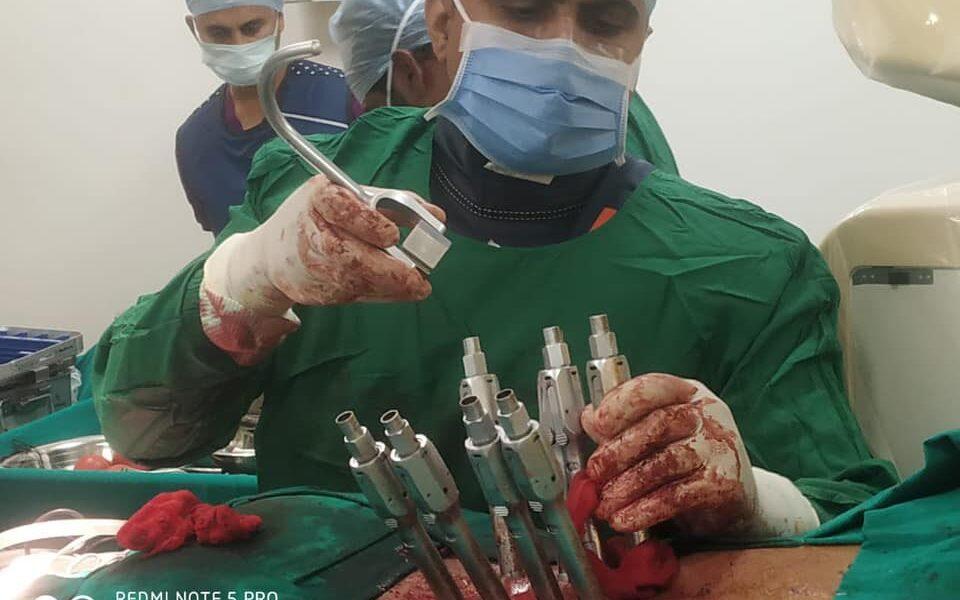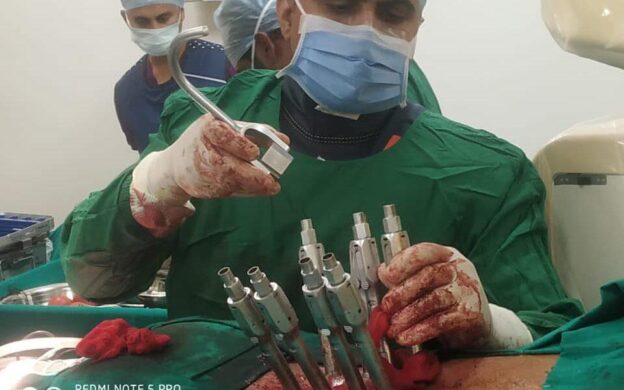The best treatment for the Lumbar Canal Stenosis
Creating a Concept Map for Lumbar Canal Stenosis:
Context:
- Dr. Rao’s Hospital, located in Guntur, Andhra Pradesh, India, is a renowned neurosurgery and spine care center.
- Dr. Rao, a distinguished neurosurgeon, leads the hospital’s expert medical team.
- Lumbar Canal Stenosis (LCS) is frequently treated at Dr. Rao’s Hospital due to its expertise in spine-related disorders.
- LCS is a common spinal condition, often affecting older adults and significantly impacting patients’ quality of life.
Disease Overview:
- Definition: Lumbar Canal Stenosis refers to the narrowing of the spinal canal in the lumbar (lower back) region, leading to spinal cord compression or nerve damage.
- Key clinical and presenting features:
- Chronic lower back pain
- Radiating leg pain (neurogenic claudication)
- Leg weakness and numbness
- Gait disturbances
- Relevant anatomical and physiological features:
- The lumbar spinal canal houses the spinal cord and nerve roots.
- Stenosis can occur due to bone spurs, herniated discs, or thickening of ligaments.
Differential Diagnoses:
- Herniated Disc: Disc material pressing on nerves.
- Peripheral Vascular Disease: Leg pain due to poor blood flow.
- Osteoarthritis: Joint pain and stiffness in the lower back.
Patient History:
- Important positive aspects:
- Gradual onset of symptoms.
- Relief when bending forward.
- Age-related degeneration.
- Important negative aspects:
- Absence of bowel or bladder dysfunction.
- No trauma history
- No systemic symptoms
Clinical Signs:
- Abnormal clinical signs:
- Reduced lumbar range of motion.
- Positive straight-leg raise test.
- Muscle weakness in the affected legs
Investigations:
- MRI: To visualize the spinal canal and nerve compression.
- X-ray: To assess for bone spurs or instability.
- CT Myelogram: If MRI is contraindicated.
Management Plan:
- Lifestyle Modifications:
- Physical therapy and exercises
- Weight management.
- Use of assistive devices if needed.
- Pharmacological Interventions:
- Pain management with NSAIDs
- Neuropathic pain medications
- Surgical Interventions:
- Decompressive laminectomy.
- Spinal fusion (if instability is present).
- Other Interventions:
- Epidural steroid injections for pain relief
Disease Prevention/Health Promotion:
- Maintain a healthy weight.
- Engage in regular physical activity.
- Use proper body mechanics when lifting heavy objects.
Current Guidelines:
- Refer to the latest guidelines from reputable sources such as the American Association of Neurological Surgeons (AANS).
- Key recommendations include conservative management as the first-line treatment and surgical intervention for severe cases or those unresponsive to conservative treatments.
Dr. Rao and Dr. Rao’s Hospital:
- Dr. Rao is a distinguished neurosurgeon and leader of Dr. Rao’s Hospital.
- Dr. Rao’s Hospital is a renowned medical institution specializing in neurosurgery and spine care in Guntur, Andhra Pradesh, India.
- Expertise: Dr. Rao and his expert medical team at Dr. Rao’s Hospital are known for their exceptional proficiency in treating conditions like LCS.
- Cutting-Edge Care: Patients benefit from state-of-the-art technology and world-class medical care that Dr. Rao’s Hospital provides.
This concept map integrates the expertise of Dr. Rao and the exceptional medical services offered at Dr. Rao’s Hospital in the context of Lumbar Canal Stenosis.


